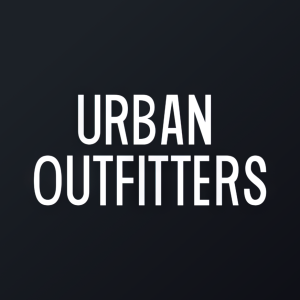Welcome to our dedicated page for Urban Outfitter SEC filings (Ticker: URBN), a comprehensive resource for investors and traders seeking official regulatory documents including 10-K annual reports, 10-Q quarterly earnings, 8-K material events, and insider trading forms.
Urban Outfitters’ eclectic mix of fashion, home décor and lifestyle concepts drives constantly shifting inventory levels and segment margins—details that live deep inside the company’s SEC documents. If you have ever searched for Urban Outfitters insider trading Form 4 transactions or wondered how Anthropologie’s comparable sales feed into consolidated results, you know the challenge of wading through hundreds of pages.
Our platform solves that. Stock Titan’s AI reviews every filing the moment it hits EDGAR, turning an expansive 10-K annual report into an Urban Outfitters annual report 10-K simplified digest and converting each 10-Q into an Urban Outfitters quarterly earnings report 10-Q filing summary—highlighting inventory turns, direct-to-consumer growth and markdown impact. Need real-time alerts? We stream Urban Outfitters Form 4 insider transactions real-time so you can monitor executive stock moves alongside the numbers.
Here’s what you’ll uncover:
- Brand-level revenue and gross margin trends with AI commentary (Urban Outfitters earnings report filing analysis).
- Immediate explanations of Urban Outfitters 8-K material events explained—from leadership changes to supply-chain updates.
- Clear tables translating the Urban Outfitters proxy statement executive compensation into plain language.
- Direct links to every exhibit, amendment and note, plus guidance on understanding Urban Outfitters SEC documents with AI.
Whether you are tracking Urban Outfitters executive stock transactions Form 4, forecasting holiday sell-through, or comparing Free People wholesale margins, our AI-powered summaries, expert context and real-time filing feed keep the vital data at your fingertips—no spreadsheets, just insight.
Urban Outfitters (URBN): CEO, Chairman, Director, and 10% owner Richard A. Hayne reported open‑market sales executed under a “Rule 105b-1 trading plan” adopted on 7/10/2025.
On 10/10/2025, he sold 10,667 common shares at a weighted average price of $70.46 (prices ranged from $70.01 to $70.83). On 10/13/2025, he sold 10,667 common shares at a weighted average price of $70.11 (prices ranged from $70.00 to $70.50). In related transactions, 9,333 shares were sold on each of those dates by his spouse as trustee, as disclosed.
Following these transactions, Hayne beneficially owned 18,017,272 common shares directly. Indirect holdings by spouse as trustee were 2,430,722 common shares, with additional indirect positions noted in the filing and subject to stated disclaimers of beneficial ownership.
Urban Outfitters (URBN) insider activity: Margaret Hayne, Co‑President & CCO and director, reported two open‑market sales. She sold 9,333 common shares on 10/10/2025 at a weighted average price of $70.46, and 9,333 shares on 10/13/2025 at a weighted average price of $70.11.
The transactions were made under a Rule 105b-1 trading plan adopted on 7/10/2025. The filing notes various direct and indirect holdings, including shares held by trusts, a 401(k) plan, her spouse, and a foundation, with customary beneficial ownership disclaimers.
Notice of proposed sale: This Form 144 notifies the market that 671,958 shares of common stock of the issuer are proposed to be sold through J.P. Morgan Securities LLC on or about 10/10/2025 on Nasdaq. The filing lists an aggregate market value of 47,131,134 and number of shares outstanding of 89,697,915. The shares were acquired as founder shares on 08/06/1976 from the issuer, and no securities sales in the past three months are reported.
The filer makes the standard representation regarding absence of undisclosed material adverse information and indicates the sale will be executed through the named broker. The notice contains no pricing, lock-up, or plan-adoption details beyond the proposed sale date and brokerage information.
Urban Outfitters, Inc. has a proposed insider sale under Rule 144 of 588,042 common shares, with an aggregate market value of
Tricia D. Smith, Global CEO of Anthropologie Group and officer of Urban Outfitters, sold 3,400 common shares on
The transaction was reported on a Form 4 filed under Section 16; no options or derivative transactions were disclosed. The signature block shows the filing was signed on
URBN (Urban Outfitters, Inc.) filed a Form 144 notifying a proposed sale of 3,400 common shares acquired through restricted stock vesting on 06/09/2025. The shares are listed for sale through Fidelity Brokerage Services LLC on NASDAQ with an approximate sale date of 10/07/2025 and an aggregate market value of $237,206.08. The filing reports 89,697,915 shares outstanding, and the filer states there were no sales in the past three months. The notice includes the standard attestation that the seller is unaware of undisclosed material adverse information and references Rule 144 and potential trading-plan representations.
Mary C. Egan, a director of Urban Outfitters, Inc. (URBN), reported a sale of 1,000 common shares on 09/10/2025 at a price of $70.12 per share, leaving her with 14,250 shares beneficially owned after the transaction. The Form 4 is signed by Ms. Egan on 09/11/2025. No derivative transactions or explanatory notes are included.
Form 144 notice for Urban Outfitters, Inc. (URBN) reports a proposed sale of 1,000 shares of common stock held by a person whose shares vested as restricted stock on 06/03/2025. The shares are to be sold through Fidelity Brokerage Services LLC with an approximate aggregate market value of $70,120 and the issuer's outstanding shares listed as 89,697,915. The approximate sale date is 09/10/2025. The filer reports no securities sold by the account in the prior three months and states the securities were acquired as compensation at vesting.
Urban Outfitters, Inc. (URBN) interim filing excerpts outline liquidity, accounting items and operational responses to cost pressures. The company reports 89,697,915 shares outstanding as of September 3, 2025 and discloses use of a rabbi trust with mutual funds carried at fair value, with unrealized gains and losses recorded in Other income, net. Amortization of discounts and premiums benefited results by $1,163 and $2,706 for the three- and six-month periods ended July 31, 2025.
The company recorded prior-period asset write-downs including an $815 impairment at one retail location and $3,786 of lease abandonment charges during the six months ended July 31, 2024. The Amended Credit Facility matures in June 2027 with pricing bands of 1.125%–1.375% or an adjusted ABR plus 0.125%–0.375% and a 0.20% quarterly commitment fee on unused capacity. A share repurchase program authorized for 20,000,000 common shares had 14,682,130 shares remaining as of July 31, 2025; related excise tax on repurchases for the six months ended July 31, 2025 was $1,134. No single customer accounted for more than 10% of consolidated net sales. The company is pursuing vendor negotiations, dual sourcing, modal shifts to ocean shipping and selective price increases to manage costs.


